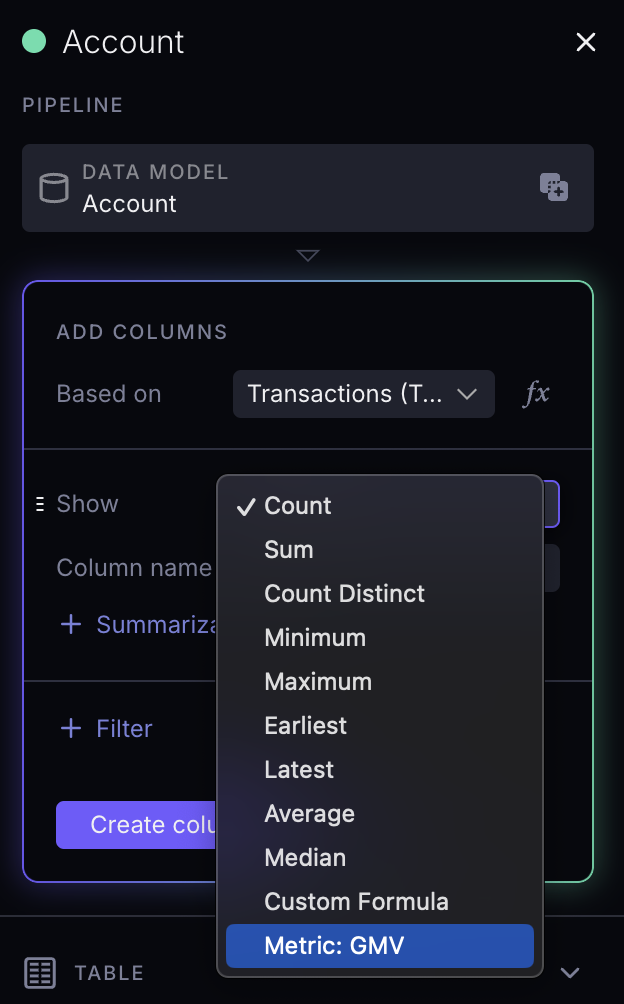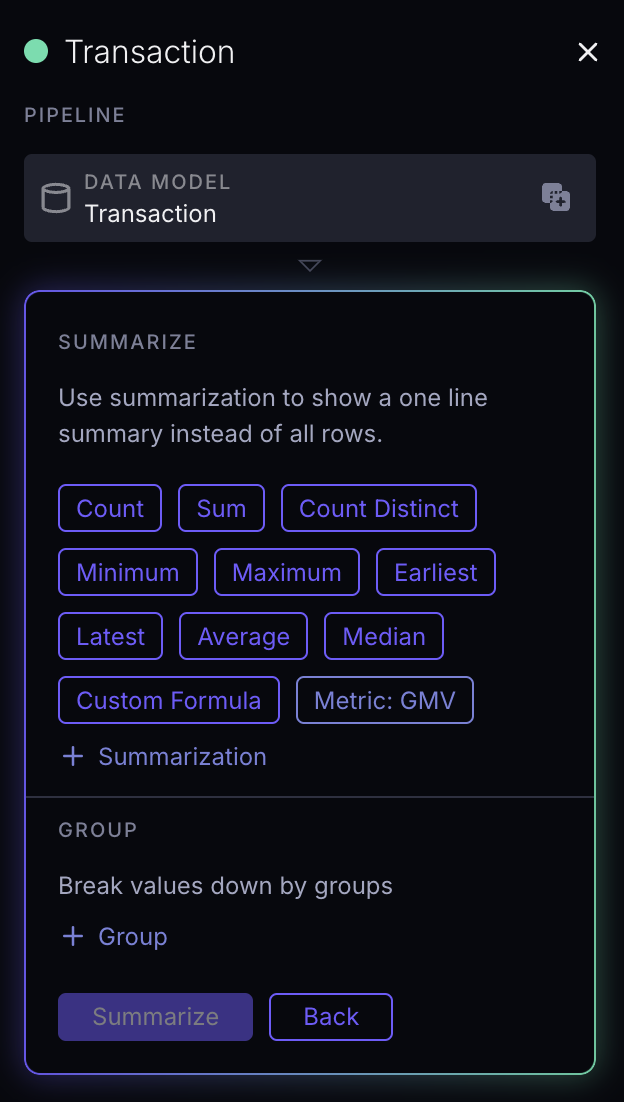Appearance
📋 Summarization options
The summarization types and options available are the same for the Summarize and New Column step types.
Most of the summarization types require a "target". For example, if you have a numeric column "Number of users" with a value for each row, you might want to get its Average value. The Average aggregation type always needs a "target" field – what to get the average of.
The fields that are listed are the fields from the relevant data model:
- When adding a New Column, that is the related data model (which you're running the calculation over)
- When Summarizing, that is the table's current, latest data model as of this step
The Count summarization type is special in that it doesn't need a target. It just gives you the basic number of rows! Note that the similarly named "Count Distinct", which counts up unique/distinct values in a given field, does require a target field (which field to count this for).
Metrics
Metrics are a special kind of summarization option available for certain models. If you've defined reusable Metrics in your data model, these will be contextually available whenever you're aggregating over that Metric's model.
For example: if the Transaction model has a metric called "GMV" defined, you will see it under New Column when the target relation is about the Transaction model:

Or if you're looking at the Transaction table, then in the Summarize step:

Metrics can also be further grouped (broken down) like any other summarization:

